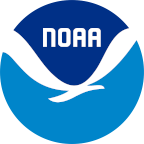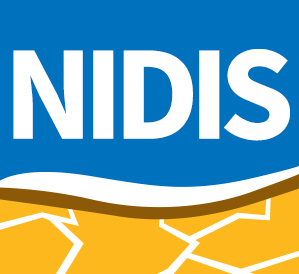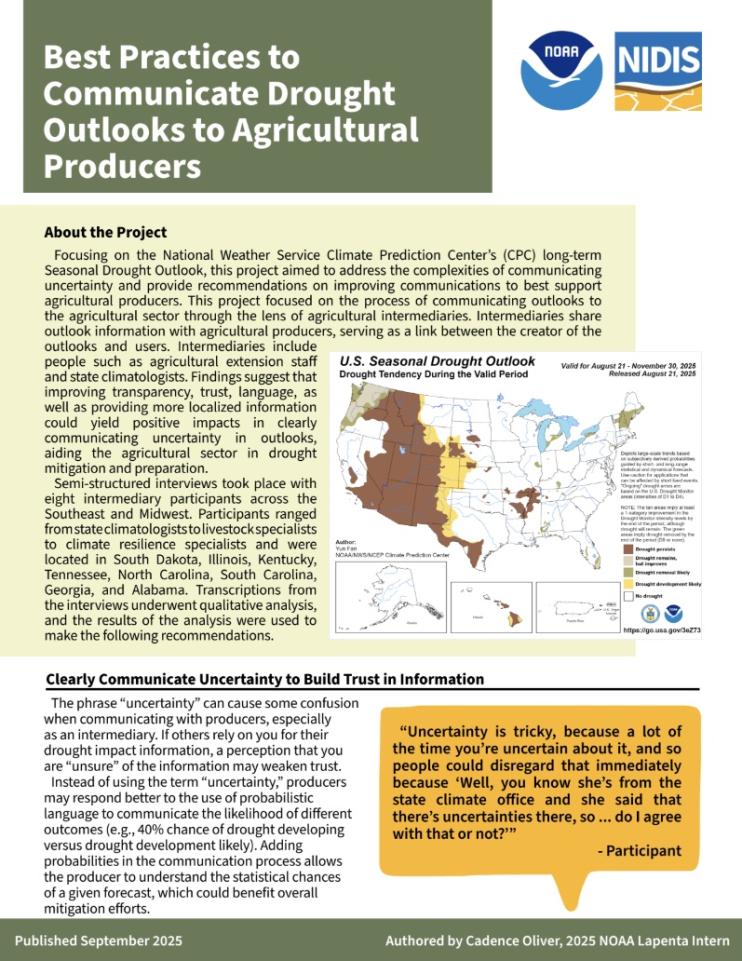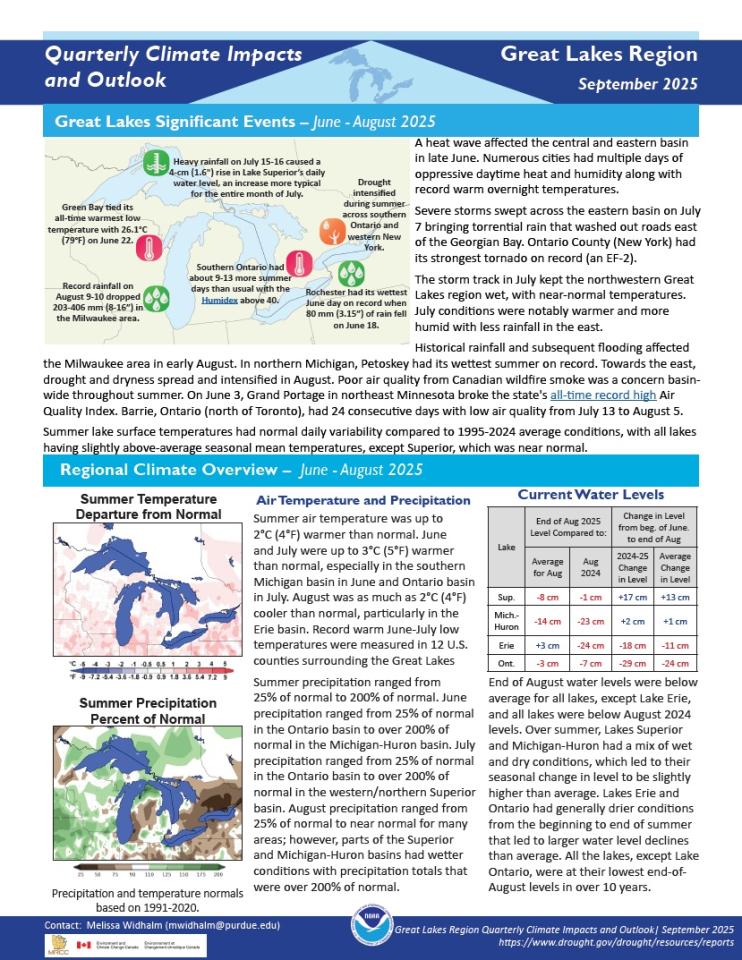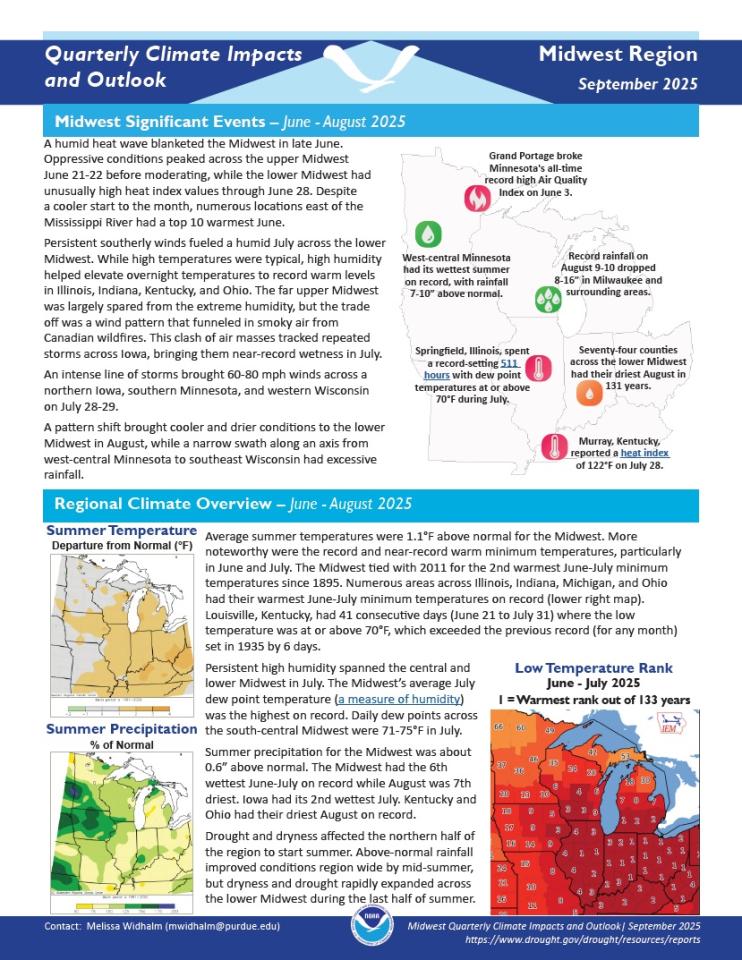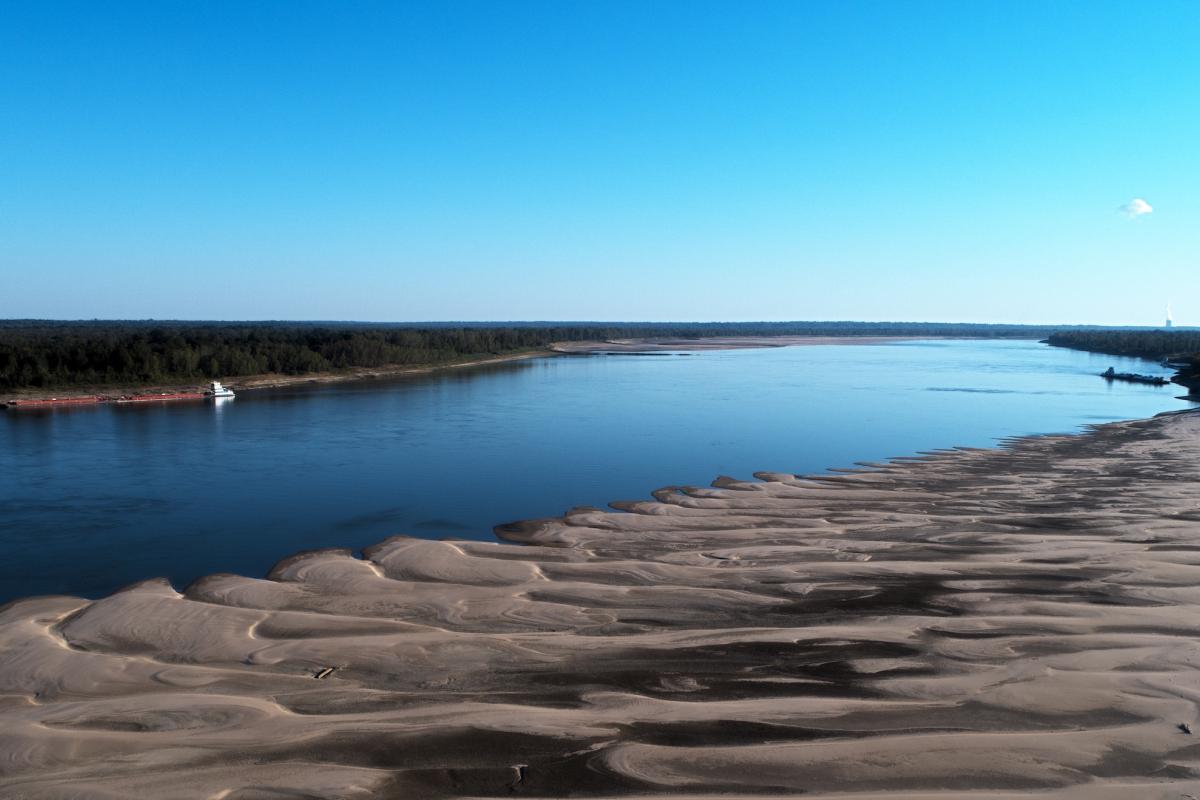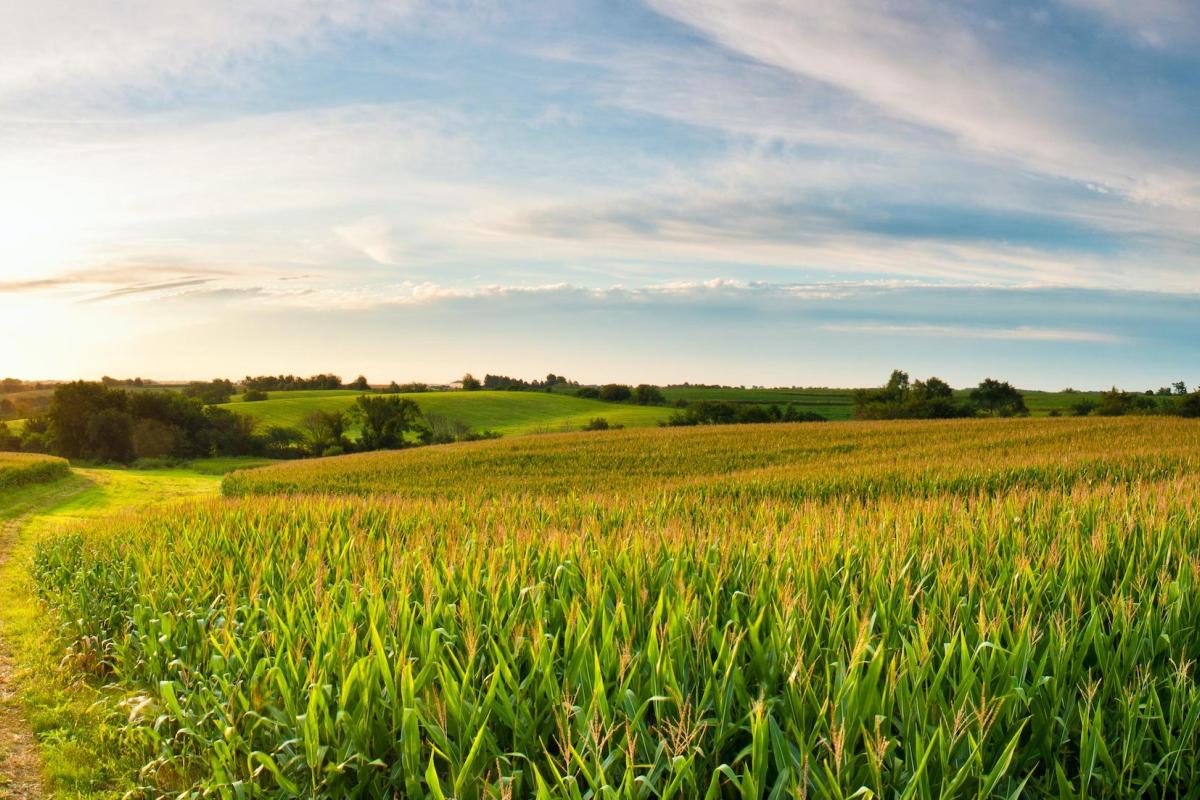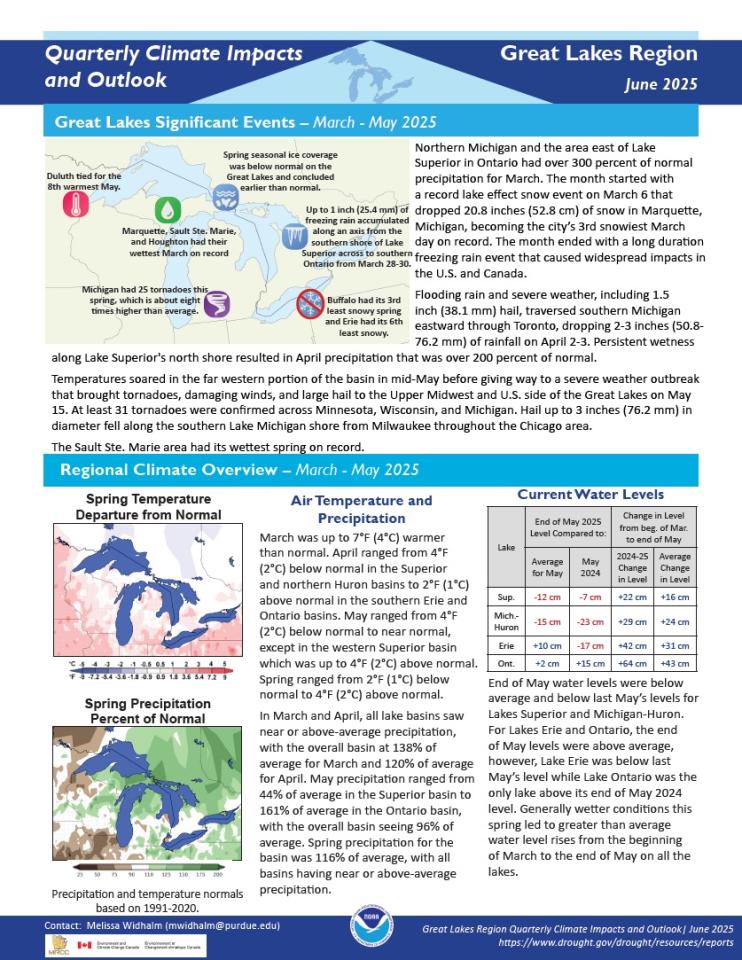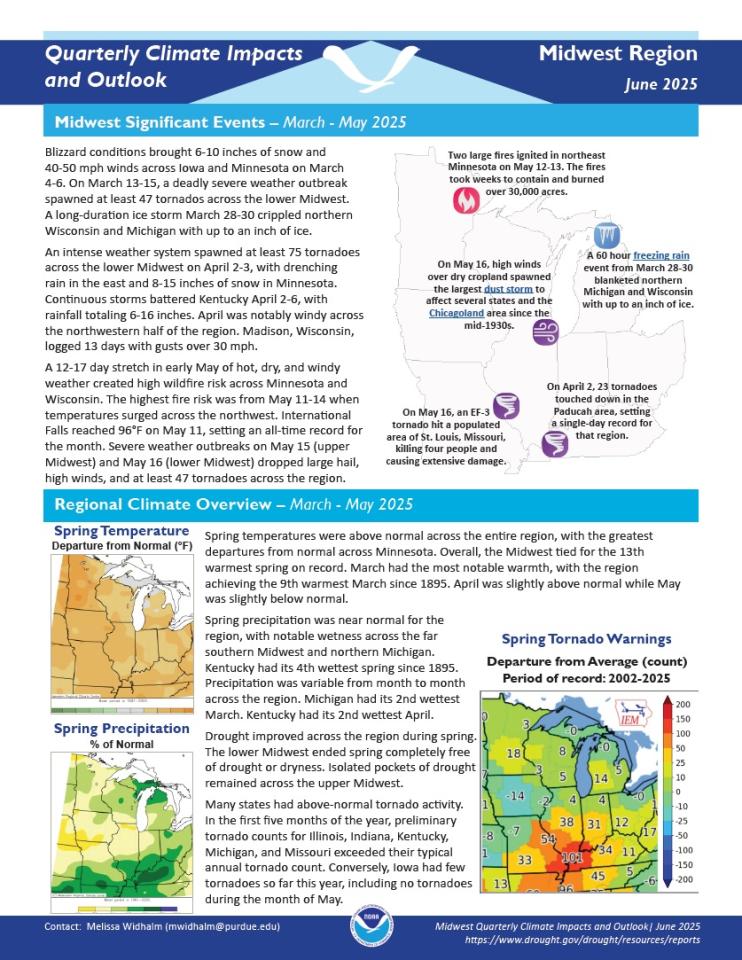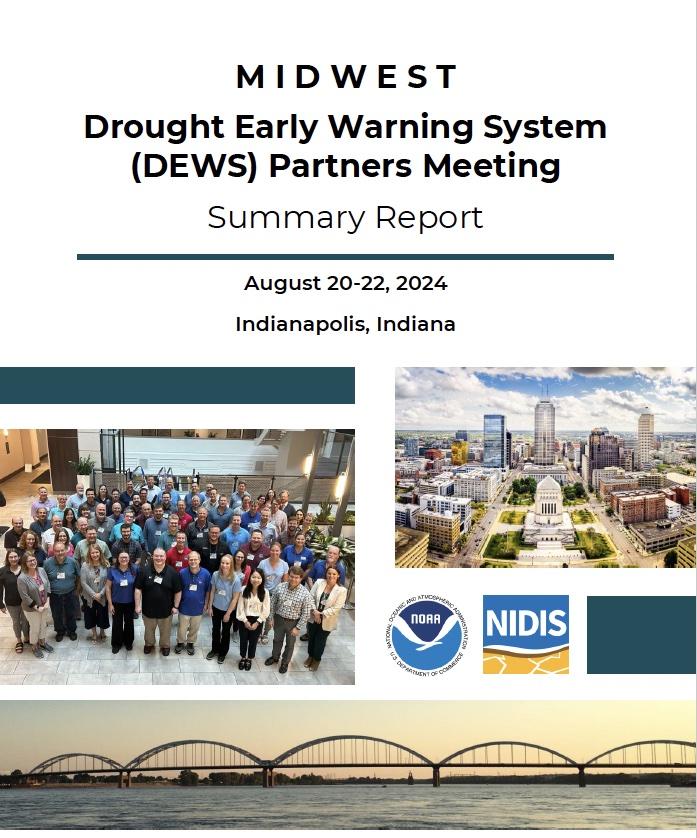For the latest forecasts and critical weather information, visit weather.gov.
Focusing on the National Weather Service Climate Prediction Center’s (CPC) long-term Seasonal Drought Outlook, this William M. Lapenta NOAA student internship project aimed to address the complexities of communicating uncertainty and provide recommendations on improving communications to best support agricultural producers. This project focused on the process of communicating outlooks to the agricultural sector through the lens of agricultural intermediaries, such as agricultural extension staff and state climatologists.
Quarterly Climate Impacts and Outlook for the Great Lakes Region for June–August 2025. Dated September 2025.
Summer air temperature was up to 2°C (4°F) warmer than normal. Record warm June-July low temperatures were measured in 12 U.S. counties surrounding the Great Lakes. Summer precipitation ranged from 25% of normal to 200% of normal.
Quarterly Climate Impacts and Outlook for the Midwest Region for June–August 2025. Dated September 2025.
Average summer temperatures were 1.1°F above normal for the Midwest. More noteworthy were the record and near-record warm minimum temperatures, particularly in June and July. Drought and dryness affected the northern half of the region to start summer. Above-normal rainfall improved conditions region-wide by mid-summer, but dryness and drought rapidly expanded across the lower Midwest during the last half of summer.
Quarterly Climate Impacts and Outlook for the Great Lakes Region for March–May 2025. Dated June 2025.
Spring temperatures ranged from 2°F (1°C) below normal to 4°F (2°C) above normal. Spring precipitation for the basin was 116% of average, with all basins having near or above-average precipitation.
Quarterly Climate Impacts and Outlook for the Midwest Region for March–May 2025. Dated June 2025.
Spring temperatures were above normal across the entire region, with the greatest departures from normal across Minnesota. Overall, the Midwest tied for the 13th warmest spring on record. Spring precipitation was near normal for the region, with notable wetness across the far southern Midwest and northern Michigan. Kentucky had its 4th wettest spring since 1895.
This report summarizes the ideas and thoughtful participation of speakers and attendees of the 2024 Midwest Drought Early Warning System (DEWS) Partners Meeting, held in Indianapolis, Indiana on August 20-22, 2024.
